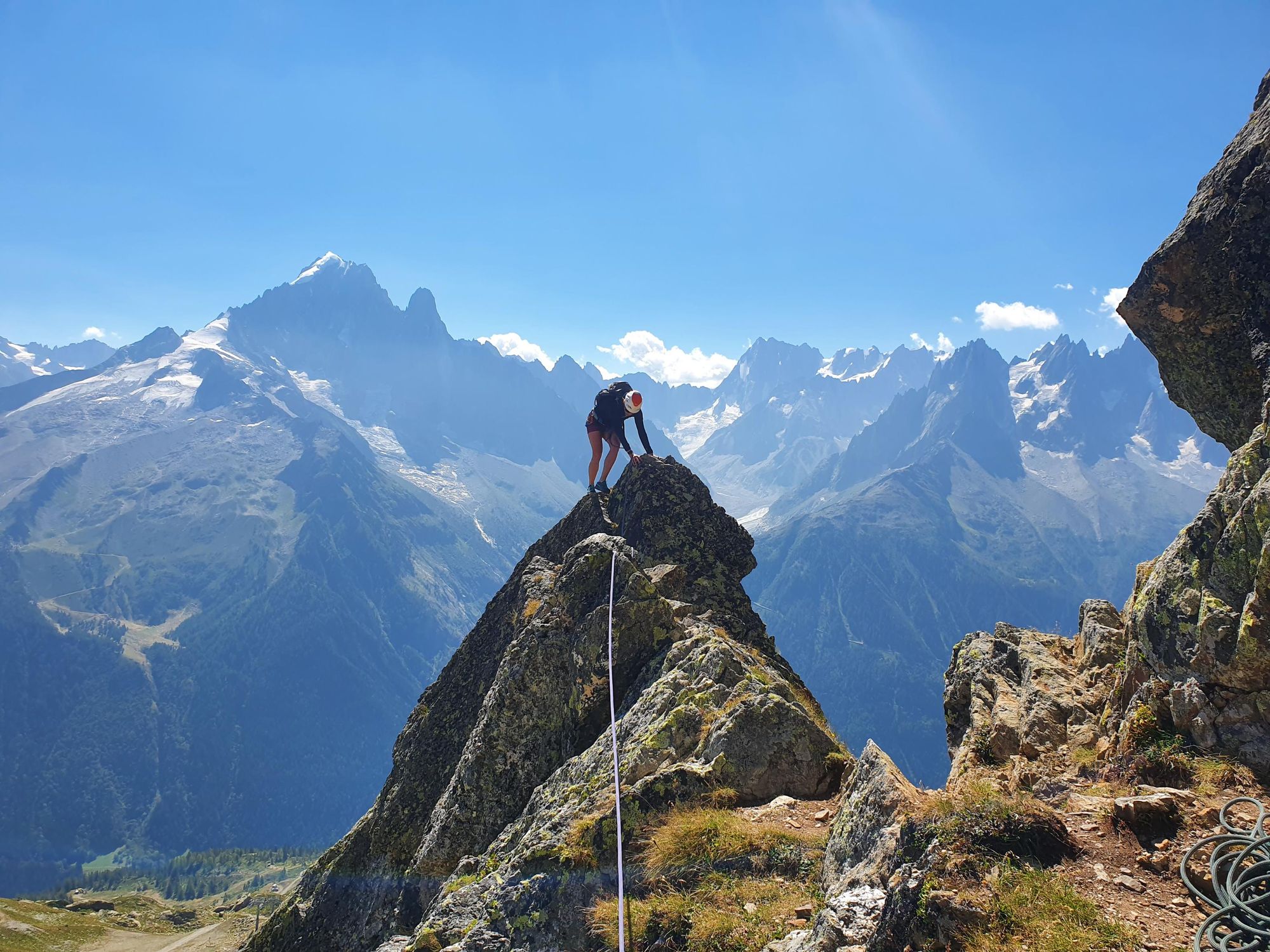There’s something about reaching the summit of a mountain that stays with you for a very long time. It’s not just the ethereal beauty of being up amongst the clouds, shrouded in silence and gazing across a majestic vista of natural splendour. It’s about the feeling we have inside ourselves - the glowing sense of accomplishment at having scaled something so much bigger than ourselves, the mental and physical challenge that we have overcome and the memories we have created along the way in order to get there.
That is real ‘life substance’ - the stuff of rich experience and personal growth. So, if you have lofty ambitions to climb a mountain one day, where should you start?
It’s not just the ethereal beauty of being up amongst the clouds, shrouded in silence and gazing across a majestic vista of natural splendour.
For me it was Snowdon in North Wales about 15 years ago. Since then, I’ve gone on to climb many of Europe’s highest mountains over 4,000m, requiring highly technical climbing skills and equipment, adaption to altitude, and a heavy dose of grit and determination. There have been exceptionally early alpine starts in the dark (hello 2am alarm), breathtaking postcard sunrises, lung-busting altitude and legs that feel like they’ve been trampled by a stampede of wild buffalo.
But you know what stays with me more than anything? The bonds you create with others when you’re up there in the rugged wilderness, living this raw, pure existence where the only thing that matters is putting one foot in front of the other. And you can get that - and more - on a mountain adventure of any scale.
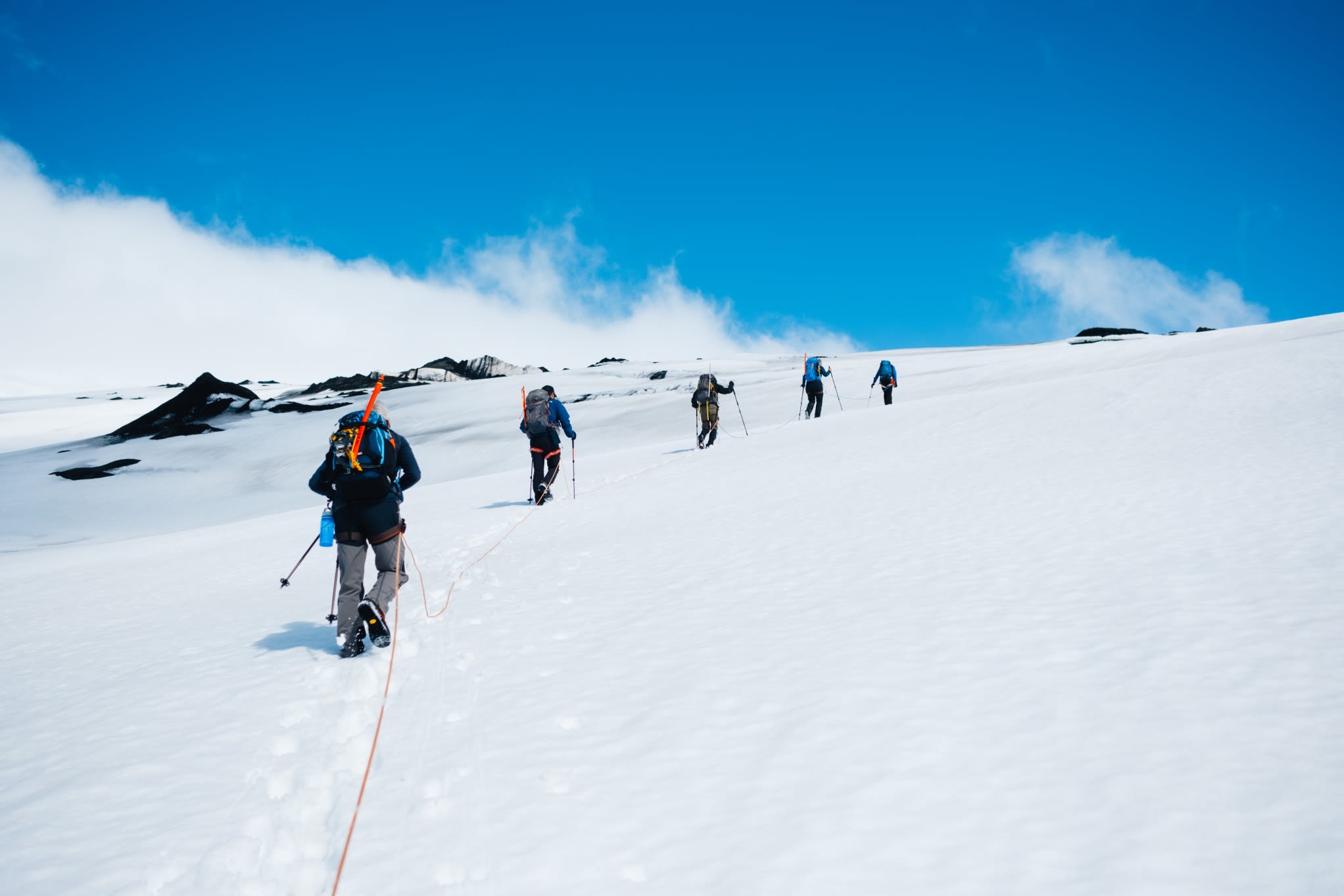
Of course, despite the physical challenge of scaling a mountain, you want to be able to absorb the experience, relish the camaraderie with your team mates, and get all the Insta-worthy photos you can. So some preparation is a good idea.
An important note: this article is intended as an intro to mountain climbing or hillwalking, and if for any reason you are unsure of your physical condition to take on such a challenge, we advise you to consult your doctor or physician.
In the gym and on the trail
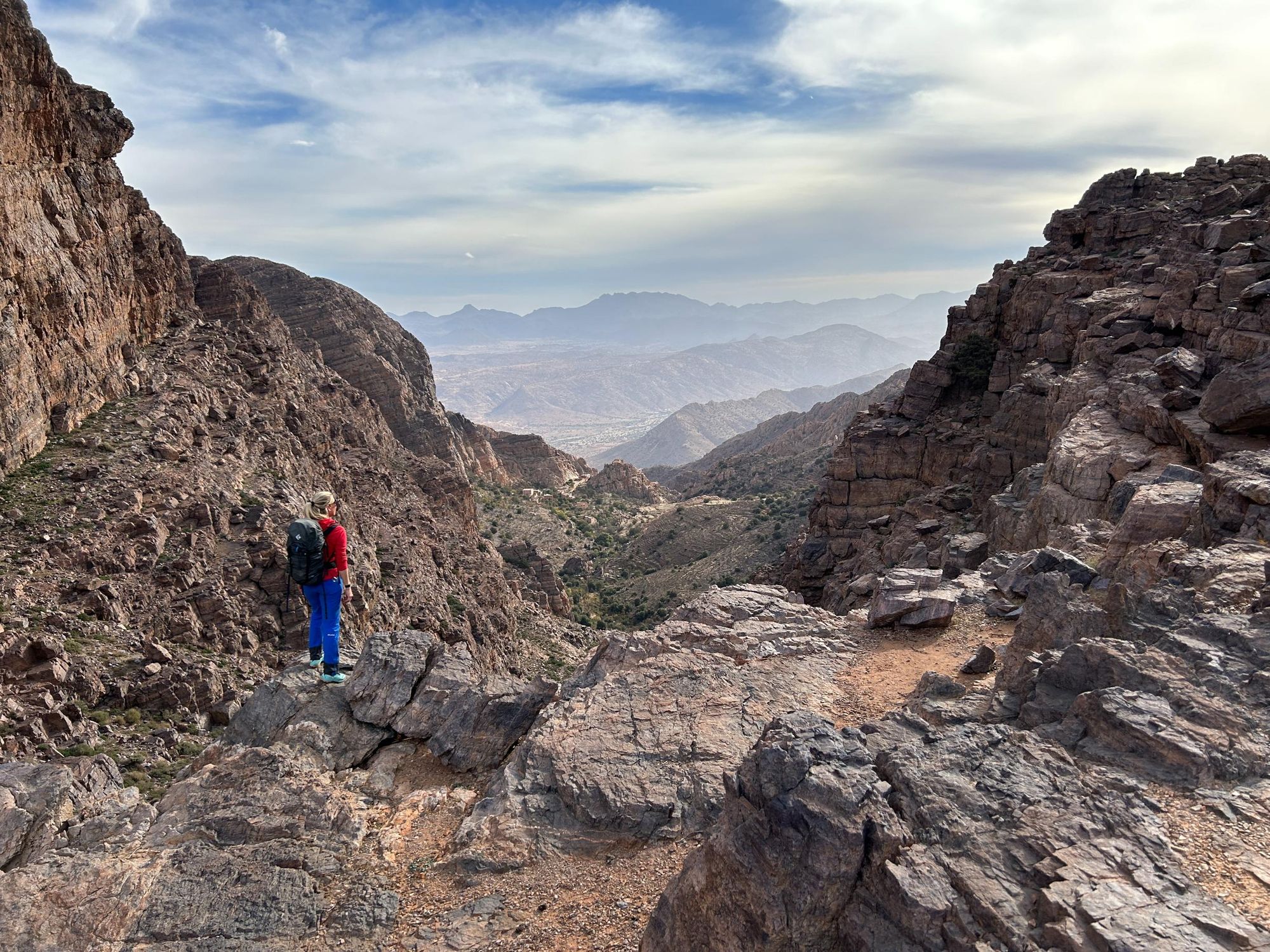
Now, most of us don’t have access to perfect snow-capped mountains right on our doorstep, but don’t worry. You can get surprisingly mountain fit without needing to hike through the Alps every weekend (although wouldn’t that be nice).

I’m going to break this down into two key areas that need to be addressed when considering mountain fitness: endurance and strength and conditioning.
Endurance
You don’t need to be able to run a marathon to climb a mountain, but aerobic endurance is a critical part of being mountain fit - and it’s relatively straight-forward to attain. Many people who are attempting to get endurance fit actually go too hard to create aerobic efficiency, so you’ll be pleased to know that this training should be easy(ish). You should be working at an intensity that means you’re able to hold a conversation. Some ways to develop aerobic endurance are:
1. Walking
A rather obvious one but this is the basis of any mountain adventure. Try to walk regularly during the week to build up ‘base’ fitness, and if you can, go for a longer walk at the weekend (three or more hours). Build up to wearing either a backpack with something heavy in it (not too heavy, aim for 10kg max), or a weighted vest, and try to incorporate hills where possible. You can also apply the exact same approach to walking on a treadmill, or use a stairmaster in the gym.
You should be working at an intensity that means you’re able to hold a conversation.
2. Running
For some, it’s freedom. For others, it’s hell. You want to be able to enjoy your training so if you don’t enjoy running, then stick to walking instead. If you can and want to, build up the running mileage slowly and don’t overdo it. Running carries a higher injury risk than many other sports so it’s important to condition your musculoskeletal system over time so that you stay injury-free. Aim for two-to-three ‘easy’ runs a week (conversation pace remember!), about 30-60 minutes in length.
3. Cycling
If you have access to a bike or a spinning/gym bike, then cycling is also a great way to build endurance and better still, as a non-weight bearing exercise, it incurs less muscle damage and injury risk. Climbing mountains requires leg strength and aerobic endurance (how efficiently your heart and lungs are working), and cycling achieves both of these - so it's a great activity to incorporate into your training regimen. Try and get at least one longer session in at the weekend of around 90 minutes, to get your body used to moving for a continuous period of time.
Strength and conditioning

Having a robust and conditioned body is just as important as gaining the endurance to keep going on a long mountain day or back-to-back hiking days. With the added element of having to carry your own kit (the extra weight makes it surprisingly harder to get uphill - funny that!), incorporating specific strength training will carry you in good stead to tackle your next big mountain.
It’s getting the right exercises in that will target key muscle groups to get you strong and mountain-ready.
It doesn’t mean you need to start downing creatine and breaking weightlifting records, though. It’s getting the right exercises in that will target key muscle groups to get you strong and mountain-ready. Aim for two strength sessions a week of around 30 minutes - it’s enough to get you primed and ready for action.
1. Squats and lunges
Both squats and lunges a pretty standard movement in many people’s training repertoire, but there’s a reason why they’re so popular. Squats and lunges really target the major muscle groups in the legs, and specifically those used during uphill and downhill hiking. Squats will strengthen the quad (thigh) and glute (buttock) muscles that are relied on heavily during uphill movement, and lunges will help condition your glutes and hamstrings (back of your thighs) to support the downhill stints.
Both movements will also help stabilise the supporting muscles around your knees, which always take a fair bit of load during mountain days. Aim for three sets of 8-12 reps for both exercises (make sure you do the full rep set on each leg during the lunges), and if you find it too easy, you can start to add weight.
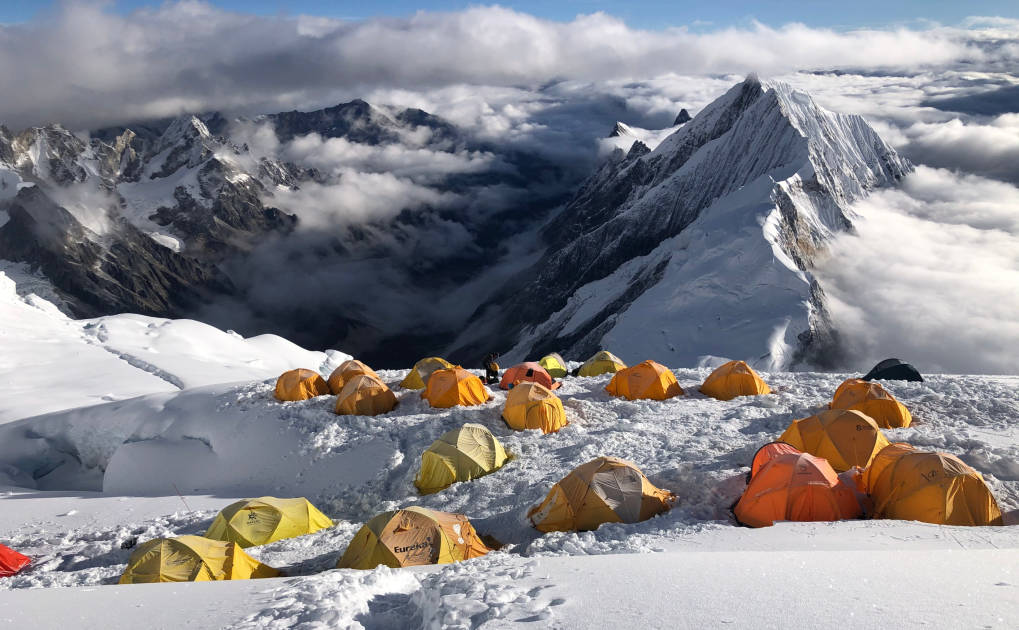
This can either be carrying a dumbbell in each hand, using a weights bag on your shoulders, or a weighted vest. If you don’t have access to weights, throw a few heavier items into a backpack and do it at home - you’ll get the same benefit.
2. Stairs
A good old staircase can come into its own for mountain fitness. This one will actually work both endurance and strength so it’s a bit of a double whammy. You can add some weight such as a backpack or weighted vest, and doing reps up and down the stairs to replicate the uphill and downhill repetitions that you will face on a long mountain day. I like to stand at the bottom of the stairs and step up to the second step in one go with one leg, bring the second leg up to stand on the step, step back down with your first leg, and finally back down with your second leg.
That’s a full set, so aim to complete a full set 25 times then take a breather, and try and do three sets of 25 in total. You can also repeat walking up and down the stairs and either time yourself to do 10 minute blocks, or do five full up and full down sets with a breather between each full set. A nice one to get the quads firing!

3. Calf raises
Anyone who has climbed a mountain will know that the calves take a bit of a hammering, especially when moving uphill for longer periods of time. I always try and prep my calves before a mountain adventure and I find calf raises are a really efficient way to do this - plus you don’t need any special equipment.
Use a step or stair and place your toes on the edge with your heels ‘hanging’ off. Make sure you press your heels down as low as you can go while keeping you toes on the step, and then slowly stand up onto your toes. Slowly lower back down to your start position - that’s one rep. Aim to complete three sets of 10-20 reps, and if you find that easy you can evolve the exercise by adding weight (out comes the backpack again!), or even trying single leg calf raises where you hover one of your legs while the other one performs the set of raises.
4. Core work
Carrying a pack in the mountains, maintaining balance on some more technical ground, and sometimes even using your arms to pull up as you scramble over rocky sections, all require a strong core. I always incorporate core work into any strength training routine by adding 3x sets of 25 reps of crunches.
Lie on your back, put your hands behind your head to support your neck and crunch just slightly up (not all the way) so your upper back leaves the floor. If you can, you can evolve this movement to crunch your knees up towards your face as you crunch your upper body upwards, almost like you’re trying to meet in the middle. After this, perform a plank - try and build up to holding a plank for one minute, and complete three sets with a rest between each set.
Tips for the Mountain
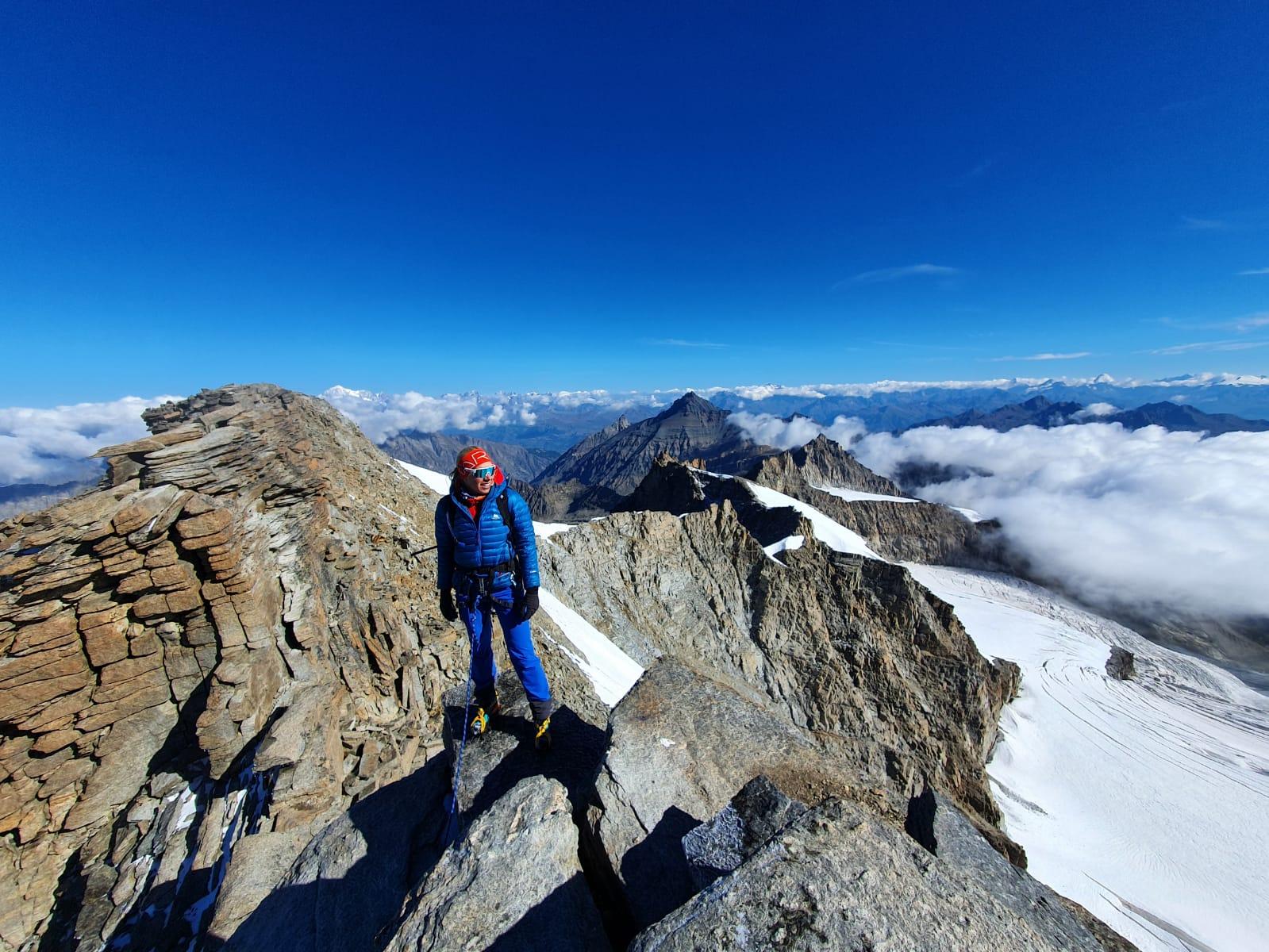
Being out in the mountains isn’t all about training hard and getting uber fit (although that does feel great) - the chances are, you’ll surprise yourself with your level of resilience and strength of will. It’s the old cliché, mind over matter - but it’s very pertinent when you’re out there battling sometimes tough conditions and a big physical challenge.
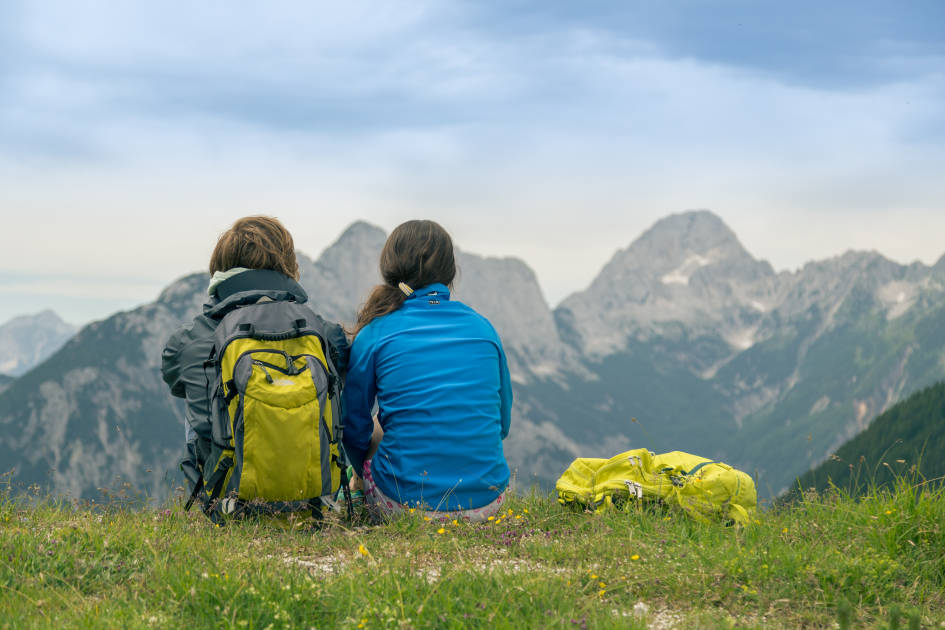
There will likely be moments when you doubt whether you are capable enough, but rest assured this is completely normal - we all have that little voice in our head at some point. Get familiar with telling the little voice where to go (bye!), and garner self-confidence through your training, preparation - and just because you’re awesome. Also, don’t worry if you don’t feel like a highly honed mountain machine, that’s not what we’re aiming for. If you want to familiarise yourself with what to expect though, it can be a good plan to explore some options:
1. Try a mini mountain
If you can, try to head out to the hills for a mini mountain challenge - either a day or a weekend - so you can get a feel of what to expect from a bigger mountain climb. If you're based in the UK, the island is adorned with hilly ranges - from the rolling Chiltern Hills just 40 miles outside of London, to the Brecon Beacons in South Wales, and then bigger mountain ranges in the Lake District and North Wales.
There will likely be moments when you doubt whether you are capable enough, but rest assured this is completely normal - we all have that little voice in our head at some point.
For my first ever mountain trip, I booked a guided hike up Snowdon. I wanted to ensure I didn’t fail, get lost, or die - but I also wanted to meet some likeminded people. If you do go on your own or with friends, though, make sure you are appropriately equipped with an OS map and compass (and know how to use them), and take warm layers and a headtorch ‘just in case’. There are some great courses available in the UK that offer navigation and mapreading skills, so these are also worth checking out if you’re unsure where to start.
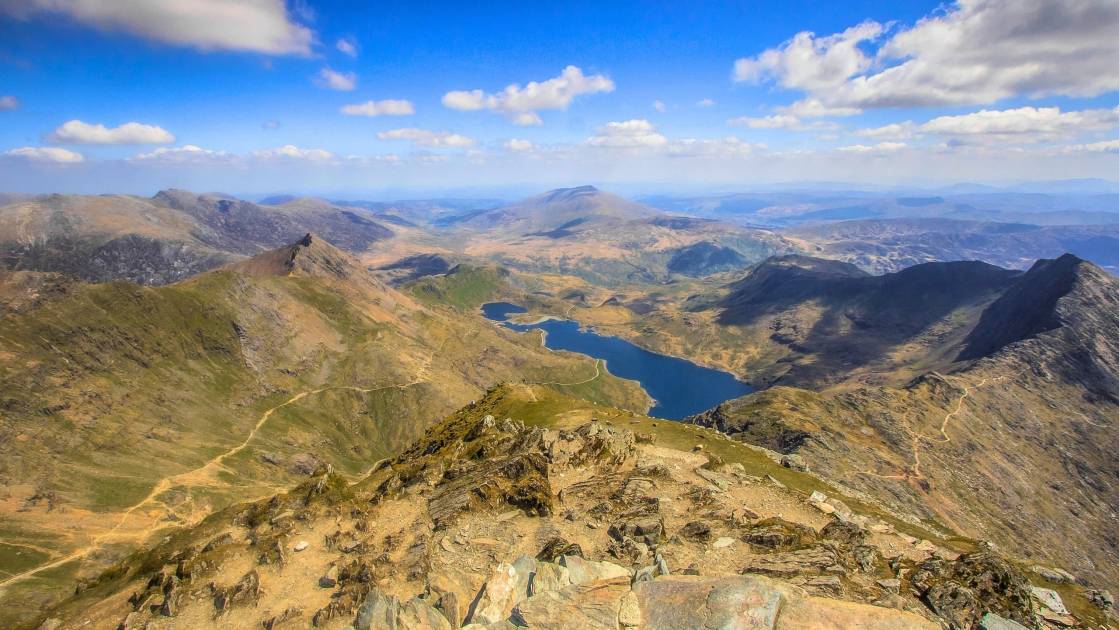
2. Get as kit-ready as you can
Try and test any kit you plan to take during your climbing adventure. Finding a well-fitting backpack is going to be important when carrying any extra weight, so find one that suits you and practice wearing it during some hikes and training sessions. Remember that reducing the weight placed on the shoulders will make you a lot more comfortable when carrying weight, so tighten the waist belt quite tight - this ensures the load is more evenly distributed around your the centre of your body, reducing strain on your neck and shoulders.
Wear them as much as possible to soften the fabrics and get your feet used to being in big boots.
Equally, finding and ‘wearing in’ a decent pair of hiking boots will make all the difference. Go half a size up so you can accommodate some thicker socks (especially important in colder conditions) and in case your feet swell from the exertion. Wear them as much as possible to soften the fabrics and get your feet used to being in big boots, and if you need to - slap some compeed or blister stickers on your heels to avoid friction blisters (these have saved me many a time on big mountain routes)!
3. Fuel appropriately
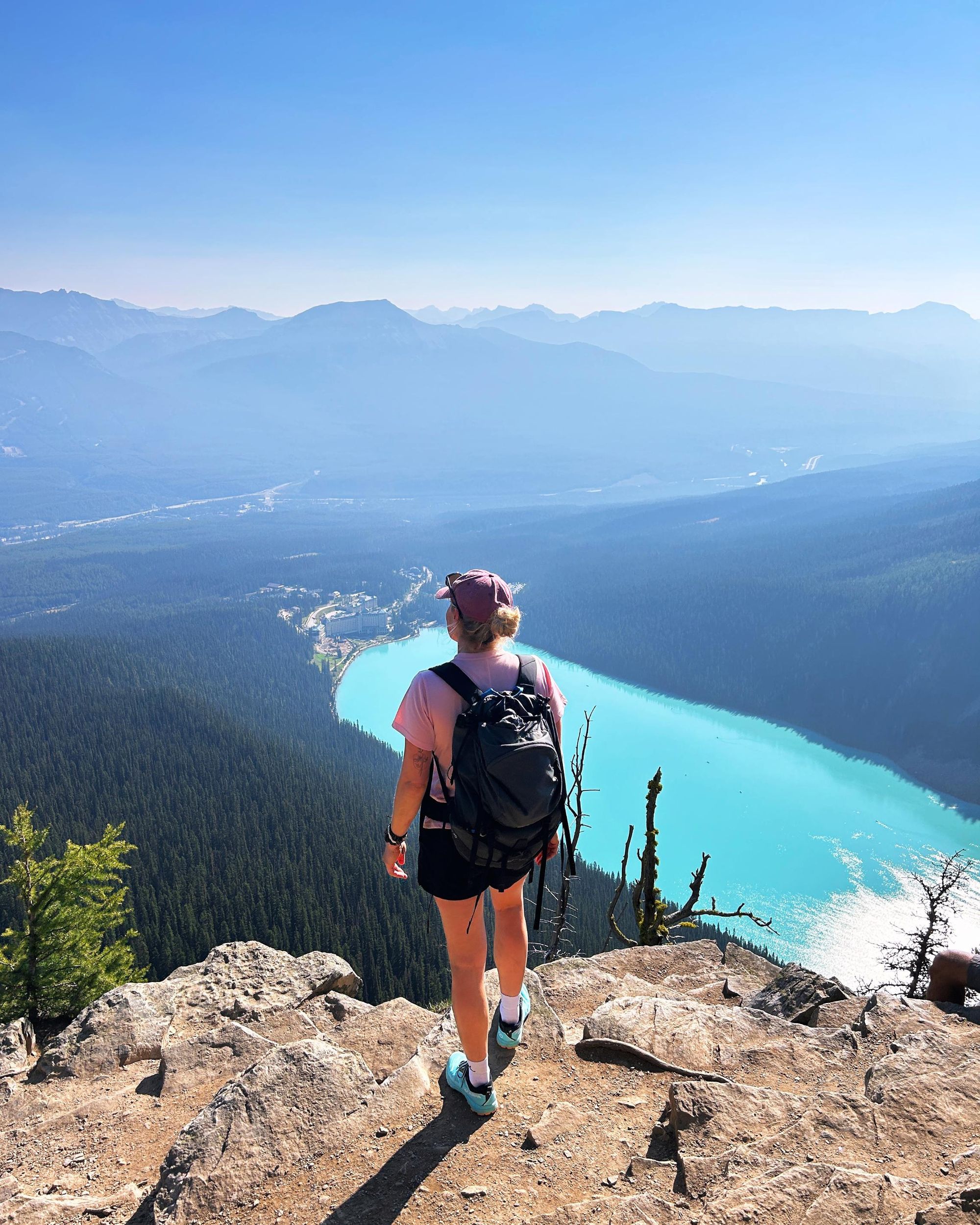
It’s an often neglected part of big mountain days, but keeping on top of your fuelling and hydration really is an important part of mountain success. It’s also a great excuse to spend all day snacking. As well as fuelling well with a substantial breakfast before you head out into the hills - even if it’s a local training walk to get some training miles in - you need to consider keeping your glycogen stores topped up throughout the day. This means little and often - and it also means taking on board food that is relatively easy to digest and convert into quick-release energy. My personal favourite is a bag of Haribo in my pocket. Okay, it’s not going to win you any nutrition points but it's definitely saved the day on more than one occasion!
Keeping on top of your fuelling and hydration really is an important part of mountain success. It’s also a great excuse to spend all day snacking...
Something tasty enough to eat, even if you’re not particularly hungry, easy to chew, and that provides a good shot of quick-release sugar is the ideal combination to sustain your energy levels on the move. Aside from that, having hiking snacks in your pack such as nuts, bananas, bagels or wraps, energy bars or even some chocolate, are all good options. It goes without saying but keeping hydrated is also critical when taking on any feat of endurance - you can use a hydration bladder with a straw for easy access to water while you’re on the move, or at least a 1 litre bottle in your pack. Add hydration tablets if you’re going to be sweating a lot.

We’re not just talking about building the necessary strength and fitness to be able to take on your challenge. Training and preparing well will also provide you with the confidence to show up and overcome any obstacles along the way - and there’s a lot to be said for that. Mountain weather can be unpredictable, and we also don’t always know how our bodies are going to react to the exertion, the environment, and in some cases, the altitude. What I do know is the physical training will help develop the mental resilience and grit that can get you through some tougher moments, so whatever nature throws at you, you’ll be in a much better position to overcome it.
The mountain environment can be a deeply moving place. Just the sheer grandeur of the mountains has the capacity to make us feel so infinitesimally small, and yet the moments that we create from the experiences we have there can truly last a lifetime. I hope your next mountain adventure fills your soul in the way it always has for me.
Read more:
- The Beginners Guide to Climbing Mount Kilimanjaro
- Climbing Mount Kilimanjaro: Which Route to Choose?
- What to Do After Climbing Mount Kilimanjaro
- A Guide to Climbing Mount Kenya
Inspired? Check out our range of mountain climbing adventures now!


